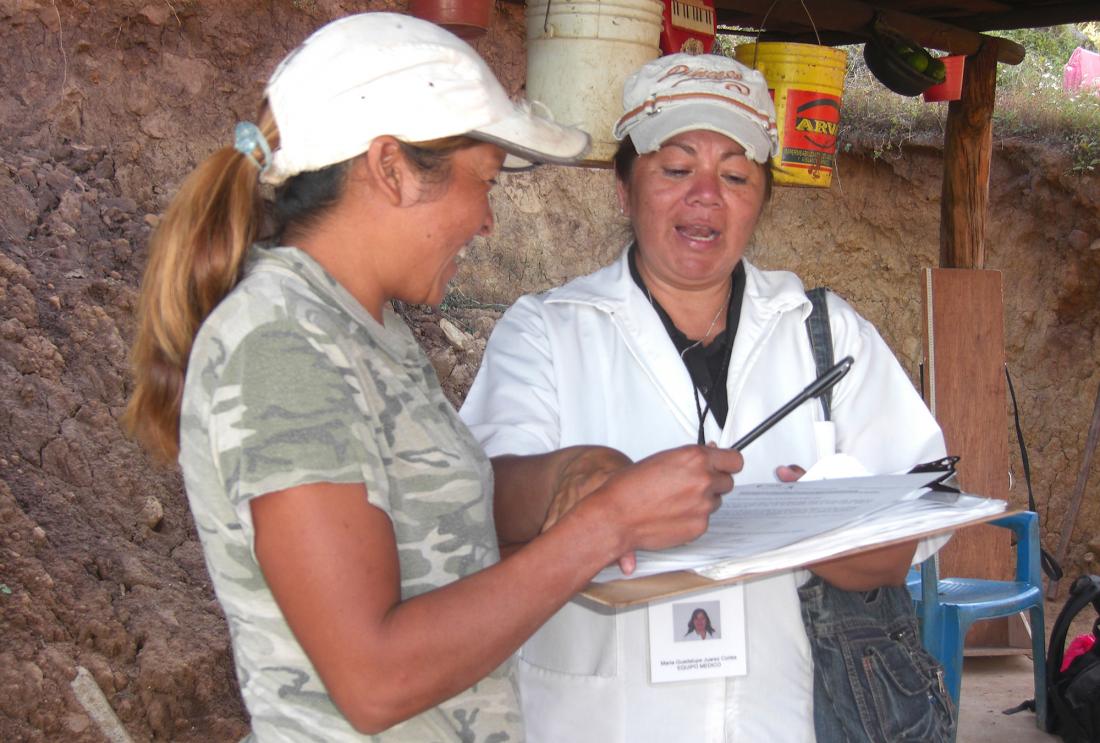The Price Effects of Cash Versus In-Kind Transfers in Mexico
- Rural population
- Food security
- Cash transfers
- In-kind transfers
- Unconditional cash transfers
When making transfers to poor families, many governments choose to transfer goods rather than cash, often in order to encourage the consumption of specific goods. In southern Mexico, researchers studied the effects of both cash and in-kind transfers on the demand and supply of food. They found that both cash and in-kind transfers increased the demand for food, but only in-kind transfers also increased supply. As a result, in-kind transfers led to lower food prices than cash transfers, which can be seen as an indirect benefit for households who did not receive the transfers.
Policy issue
When making transfers to poor families, many governments choose to transfer goods rather than cash, in order to encourage consumption of certain goods or to induce less needy individuals to self-select out of the program. However, it is often cheaper to deliver cash transfers, and giving money rather than goods gives recipients greater freedom over their consumption. Another important, but less often discussed, aspect of this policy tradeoff is the effect that in-kind and cash transfers have on local prices. Both cash and in-kind transfers could potentially increase demand for goods, because people who receive cash transfers have been given more money to spend, while those who have received in-kind transfers have money freed up for the purchase of other goods. But in-kind transfers also increase the local supply of certain goods, in which case prices could fall. Despite the potential utility of these supply and demand effects as a policy tool to redistribute to consumers, there has been little research to date on the price effects of food aid.
Context of the evaluation
This study evaluates the price effects of the Programa de Apoyo Alimentario (PAL) in Mexico. Started in 2004, PAL operates in about 5,000 very poor, rural villages throughout Mexico. Villages are eligible to receive PAL if they have fewer than 2,500 inhabitants, are classified as highly marginalized by the Census Bureau, and do not receive aid from either Liconsa (the Mexican subsidized milk program) or Oportunidades (the conditional cash transfer program). Therefore PAL villages are typically poorer and more rural than the widely-studied Oportunidades villages.
PAL provides a monthly in-kind allotment consisting of seven basic items (corn flour, rice, beans, pasta, biscuits, fortified powdered milk, and vegetable oil) and two to four supplementary items (such as canned tuna fish, canned sardines, lentils, corn starch, chocolate powder, and packaged breakfast cereal). All of the items are common Mexican brands and are typically available in local food shops.

Details of the intervention
This paper examines how giving in-kind transfers versus cash transfers affects local prices by evaluating the national rollout of the Programa de Apoyo Alimentario (PAL). In 2004, 208 villages in southern Mexico were selected for inclusion in an experiment, and randomly assigned to one of three groups: (i) Families in a randomly selected 50 percent of villages received a monthly in-kind food transfer, (ii) families in a randomly selected 25 percent of villages received a 150 peso per month cash transfer, and (iii) families in the remaining 25 percent of villages formed the comparison group and did not receive any transfers. Both the in-kind and cash transfers were delivered bimonthly, and the transfer size was the same for every eligible household regardless of family size. Resale of in-kind food transfers was not prohibited, nor were families required to purchase any particular items with their cash transfers.
The data comes from surveys of stores and households conducted by the Mexican National Institute of Health both before and after the program was introduced. The measure of post-program prices comes from a survey of local food stores. Enumerators collected prices for fixed quantities of 66 individual food items, from a maximum of three stores per village, though typically data were collected from one or two stores per village.
Results and policy lessons
Price effects of in-kind transfers and cash transfers: The cash transfer program caused prices to increase by 0.2 percent, although this effect is not statistically significant. In contrast, in in-kind villages, prices for the items in the bundle fell by 3.9 percent compared to the cash villages. The in-kind program increased both the supply of and demand for certain food: The effect of the increase in the supply was larger than the effect of increasing the available cash that local families had, and so the net effect was a 3.7 percent decline in prices for these goods.
Indirect benefits of the program via price changes: For the in-kind transfers, the reduction in local prices did not represent any additional benefit for recipient households, but represented an indirect transfer of 7.6 pesos for non-recipient households. For cash transfers, the price increase resulted in a net negative transfer of 0.41 pesos. Choosing in-kind rather than cash transfers in this setting thus generated extra indirect transfers to consumers worth over 40 percent of the direct transfer itself.
Remoteness of the village: Isolated villages are typically less integrated with the world economy, so local supply and demand should matter more in the determination of prices. There is also likely to be less competition among suppliers (i.e. among grocery shops) in these remote and typically smaller villages, which can make prices more responsive to an influx of money or goods. For these reasons, the price effects of transfers were more pronounced in remote villages. In fact, the average cash-versus-in-kind price effects were entirely driven by remote villages. Because more remote areas also tend to be poorer, the results imply that price effects will often be more pronounced in poorer areas. Thus, for transfer programs aimed at the very poorest of communities, price effects are likely to be an important component of the total welfare impact of the program.

